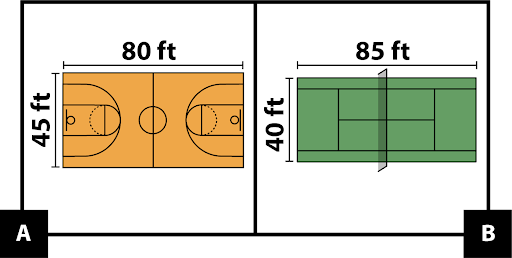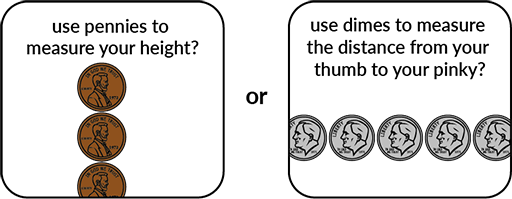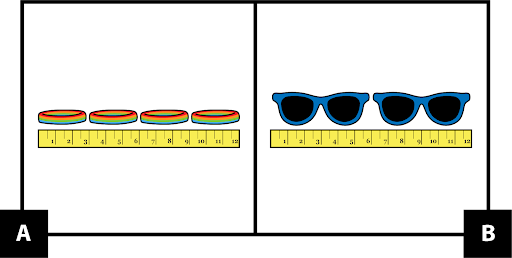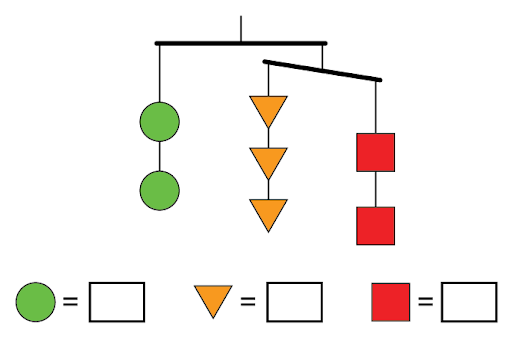Using Math at Home in the Classroom
Don’t let “at home” in the name fool you. The Math Learning Center’s Math at Home website has evolved into a robust collection of tasks and games that can be used on the playground, in the supermarket, or just about anywhere else—including the classroom. Though originally designed for use by families forced inside by the pandemic, teachers can use the familiar routines to launch a lesson, provide practice at home, or generate mathematical buzz in the school.
For In-Class Discussion
In kindergarten, students are asked to decompose numbers in multiple ways. The What Comes Next? Finger Patterns activity on Math at Home increases the cognitive demand by asking students to extend a pattern that involves decomposition.
The question implied by the image in the activity is, “What finger pattern comes next in this sequence?” But asking only that query may miss opportunities to push student thinking and orchestrate discourse. Questions like “What do you notice?” (there are 5 fingers total; the number of extended fingers on the right hand increases by 1 each time) and “What do you wonder?” (How many more images to complete the pattern?) can lead to interesting insights and generate additional problems for students to solve.
The routines within Math at Home can be used to launch a lesson by generating a discussion about the topic. For example, the activity above could kick off a kindergarten lesson about representing addition with objects and equations. Similarly, the Same & Different: Athletic Courts activity could be used to launch a Grade 4 lesson about area and perimeter.
To Share with Families
The Home Connections activities within the Bridges curriculum provide opportunities to engage families in math. But for an alternative that may be less time-intensive, consider sending home one of the Math at Home family games.
The Multiplication Bingo game for Grade 3 uses the familiar context of Bingo—but with math-based rules—to engage families. Instead of being given a bingo card, however, players get to create their own by filling in the grid with possible products of two single-digit numbers. This can lead to an interesting discussion, both at home and the next day in the classroom. Some numbers, such as 6, 8, 12, 18, and 24, come up as products more often than others, so it’s worth asking, “What numbers should you use to fill the grid?” It’s also fun to have students devise variations that they think would improve the game. One non-mathematical change that will reduce the amount of time a game lasts is to have each player choose one card from the deck, and then both players can use the product to cover a square on their board. For instance, if a student selects 3 and a sibling selects 8, both can cover 24 on their boards. (Where 24 appears on each board, or if it appears at all, will depend on where they placed it at the start of the game.) A more mathematical variation allows students to use any operation with the numbers drawn from the deck. For instance, if 8 and 3 are selected, then 8 + 3 = 11 or 8 – 3 = 5 could be used, as well as 8 × 3 = 24. (Division isn’t an option in this case since 8 ÷ 3 doesn’t yield an integer.)
To Fill Five Minutes
You might consider hanging several Math at Home activities in the cafeteria, along the hallways, or on bulletin boards to generate mathematical buzz in your school. To offer appropriate activities for all students, post activities representing a range of grades. For instance, you could use the Would You Rather? Measuring with Coins activity from Grade 1…
…along with the Same & Different: Bracelets and Sunglasses activity from Grade 2…
…and the Mobile Math: Balance It Out activity from Grade 4.
Math at Home can also serve as a source of sponge activities that students can complete while you take attendance, pass out books, or set up learning centers. Rather than having students read or sit quietly, why not use a Math at Home activity to fill that idle time with some minds-on math? Madeline Hunter coined the term sponge activities for learning activities that soak up precious time that would otherwise be lost, and Math at Home activities work perfectly.
The truth is, there are lots of effective ways to use Math at Home this fall. The website now contains over 500 activities, so you’re sure to find many that will appeal to your students. Whether you’re engaged in face-to-face, remote, or hybrid instruction, be sure to take advantage of this incredible resource.





